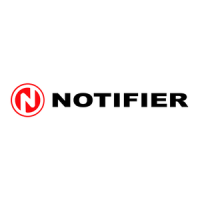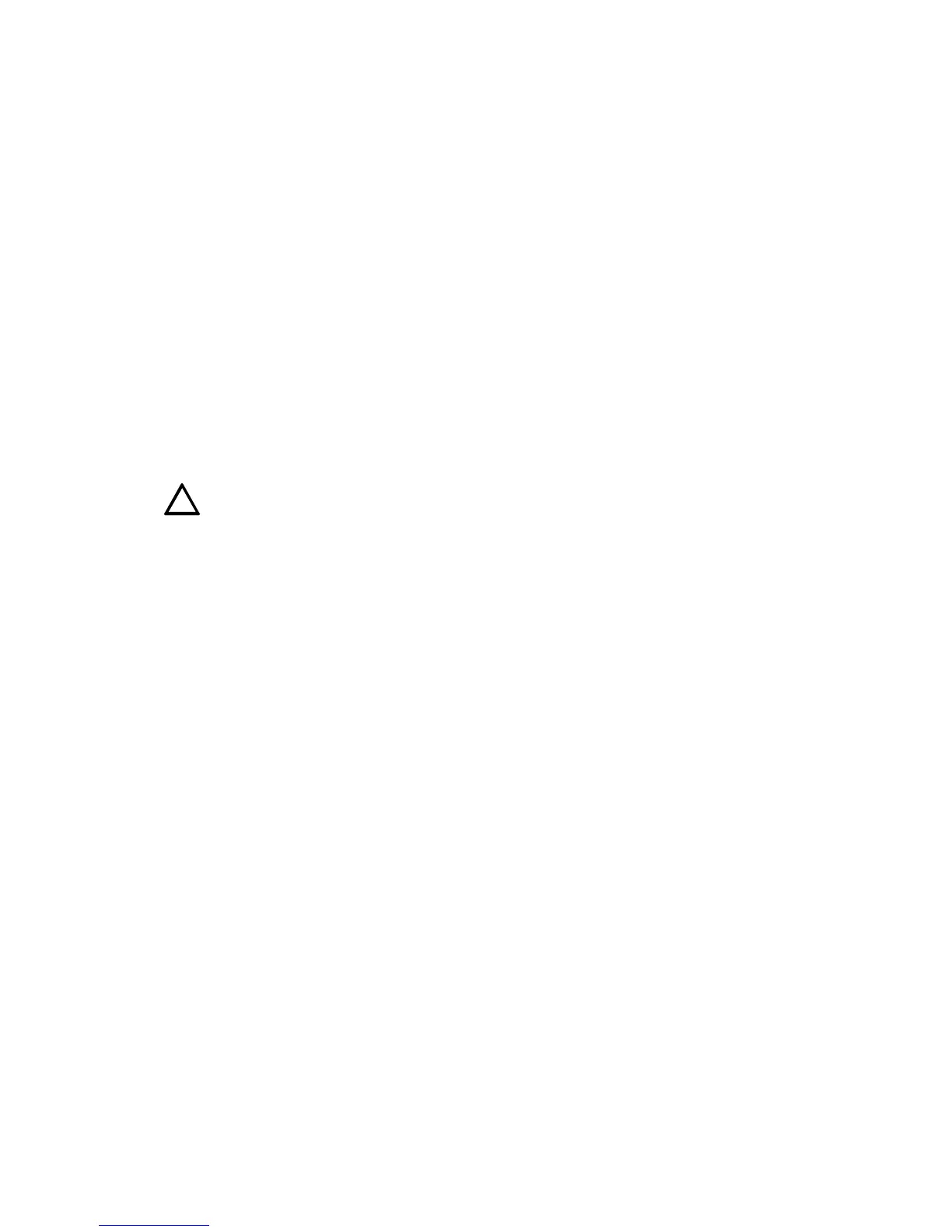General
UDACT Instruction Manual PN 50050:H 09/16/2002 103
Appendix G: NFS-640
General
The UDACT is capable of reporting a maximum of 99 zones or 700 points when used with the
NFS-640.
Mounting
If the UDACT is not mounted within the cabinet that contains the NFS-640, then it must be mounted
remotely in an ABS-8R/RB or UBS-1 enclosure placed within 6000 feet (1828.8 meters) of the control
panel. For mounting instructions see "Remote Installation" on page 22.
If the NFS-640 is contained in a CAB-4 Series cabinet, then the UDACT may be mounted to a
CHS-M2, CHS-4, or CHS-4MB chassis within that cabinet. For mounting instructions see "Internal
Installation" on page 20.
Wiring
CAUTION: Remove all power from the control panel by disconnecting AC and batteries before
making any connections to prevent personal and/or circuit damage.
Connections
Refer to Figure 25 and Figure 26 on page 104.
Connect the communication line between the EIA-485 terminal block TB13 on the CPU-640 and TB1
terminals 3 and 4 on the UDACT, being certain to observe polarity.
If no other devices are connected to the EIA-485, install a 120 ohm EOL resistor across UDACT TB1
terminals 3 and 4.
Connect the
Ground Wire (PN 71073, provided) from the UDACT EARTH terminal on TB3 to the CHS-4
Chassis or to a solid building earth ground.
Connect 24VDC filtered, non-resettable power from the CPU-640 TB7 to TB1 terminals 1 and 2 on the
UDACT.
Notes:
1. Ferrite cores, PN 29090, are recommended for all applications.
2. Recommended wire is 12 AWG (3.25mm
2
) to 18 AWG (0.75mm
2
), twisted pair, shielded cable.
Connect only one end of shield: a) shield may be connected to cabinet (earth ground) at fire alarm
panel, or b) shield may be connected to TB1 Terminal 5 (Shield) at UDACT as shown in Figure 25.
Note: The shield end that is not connected should be insulated to prevent accidental grounding. Do not connect both
ends of shield under any circumstance since a ground fault may result.
1. Conduit is recommended for external wire runs. Consult local building codes.
2. Refer to "Specifications" on page 13 for power requirements.
!
Technical Manuals Online! - http://www.tech-man.com

